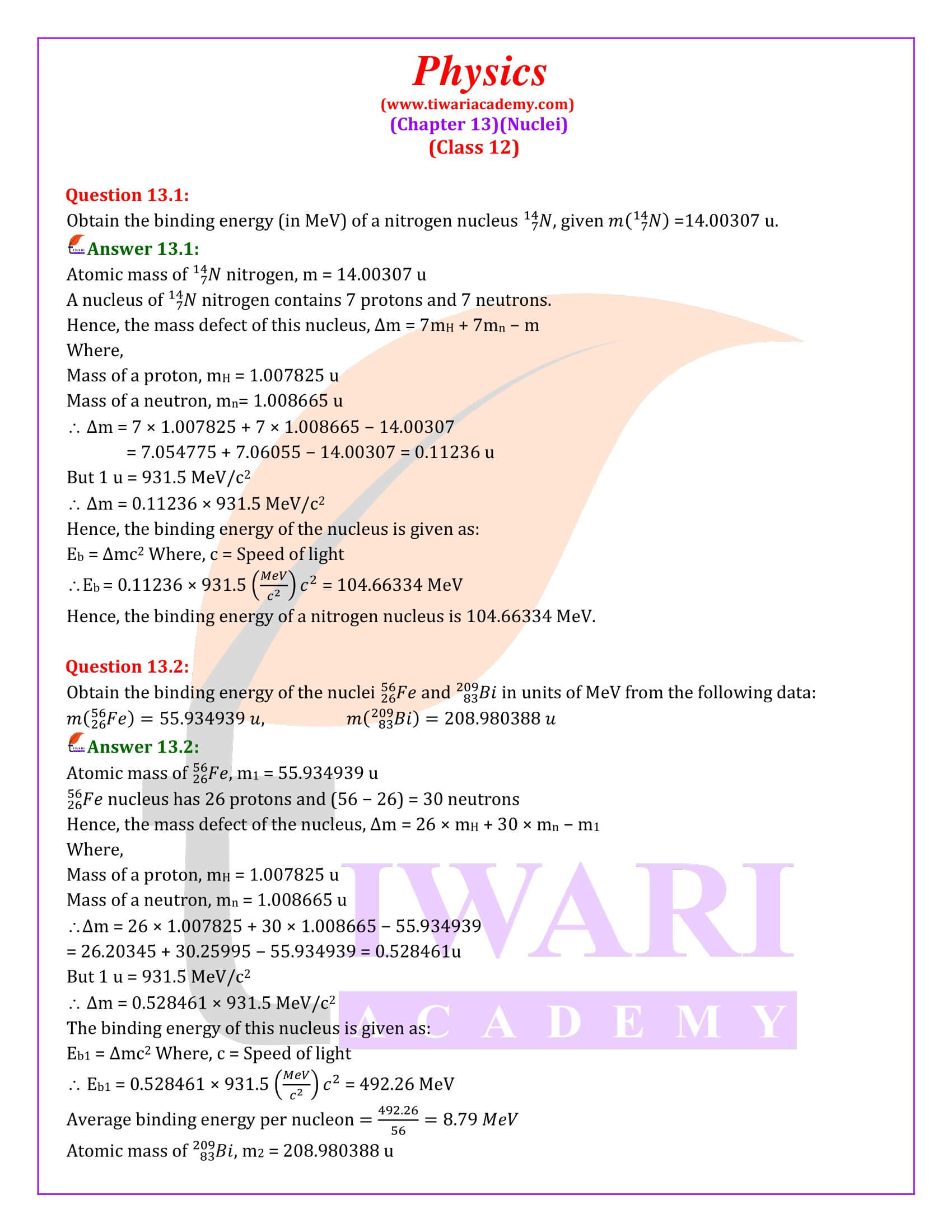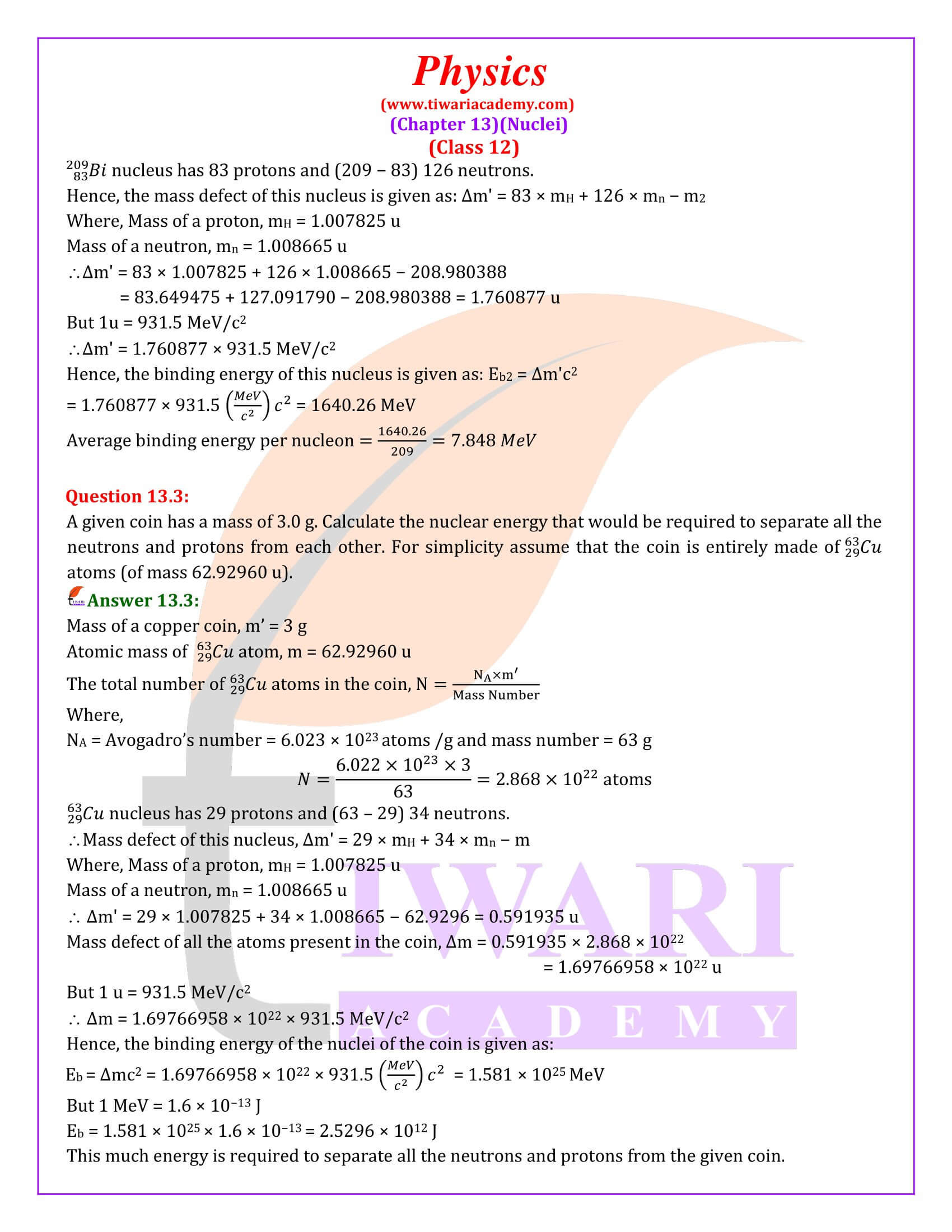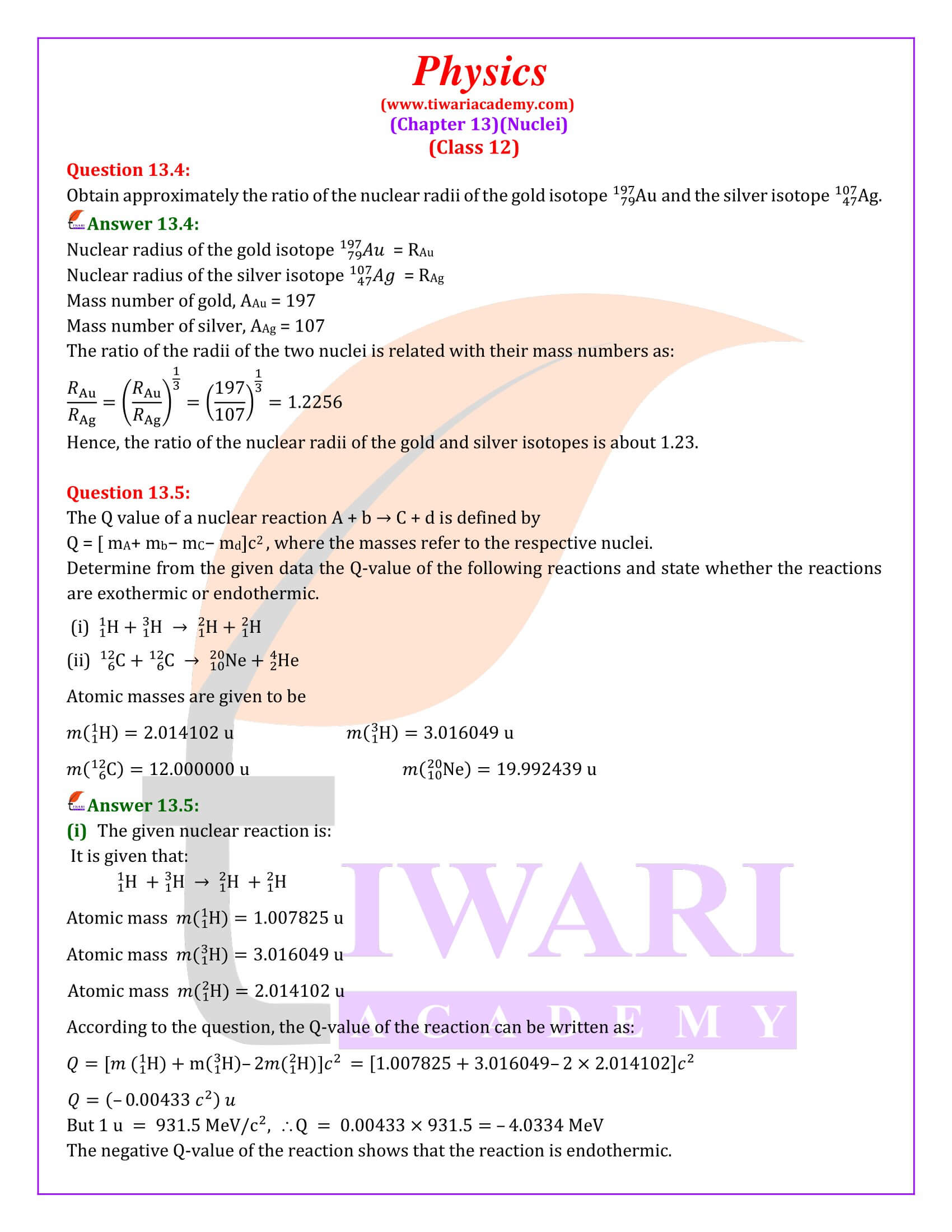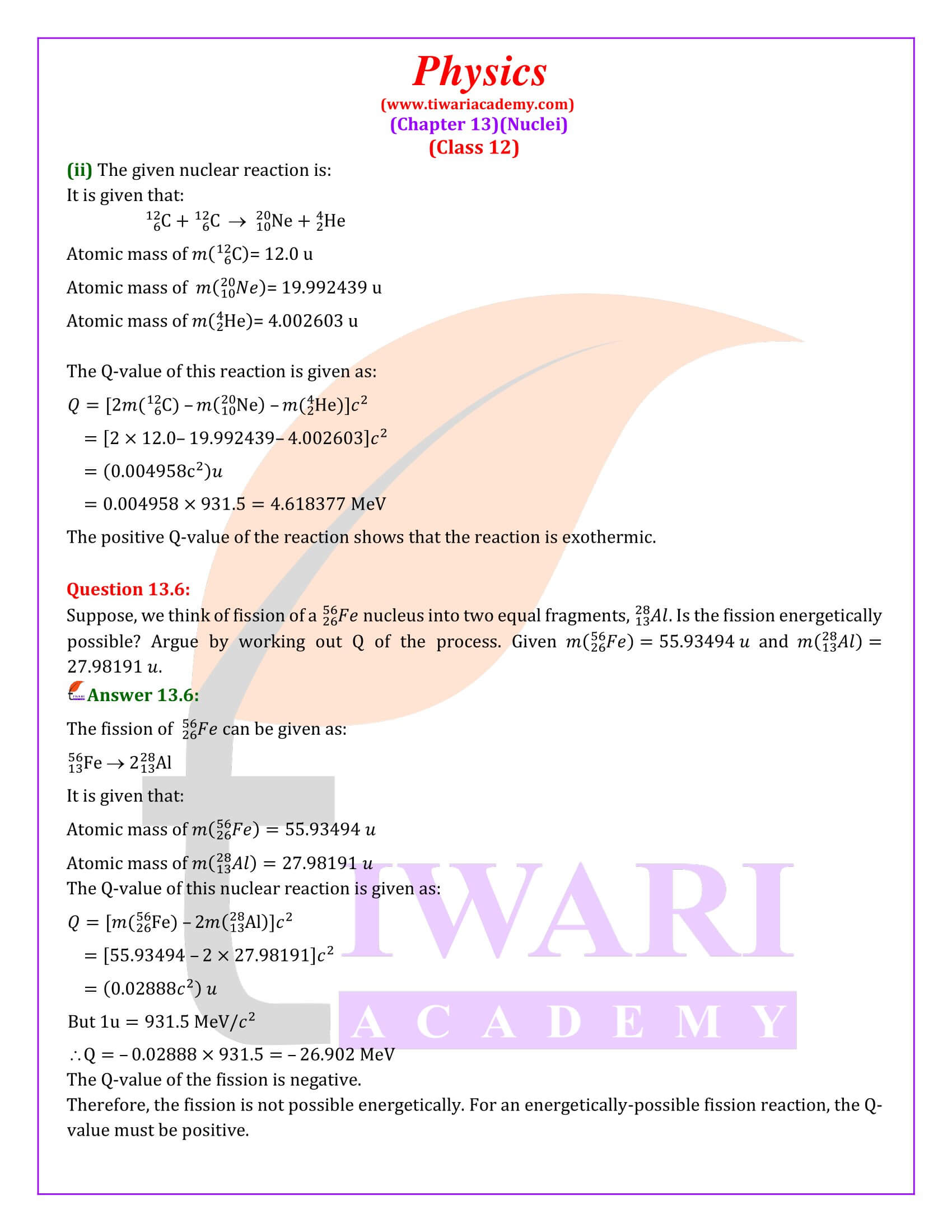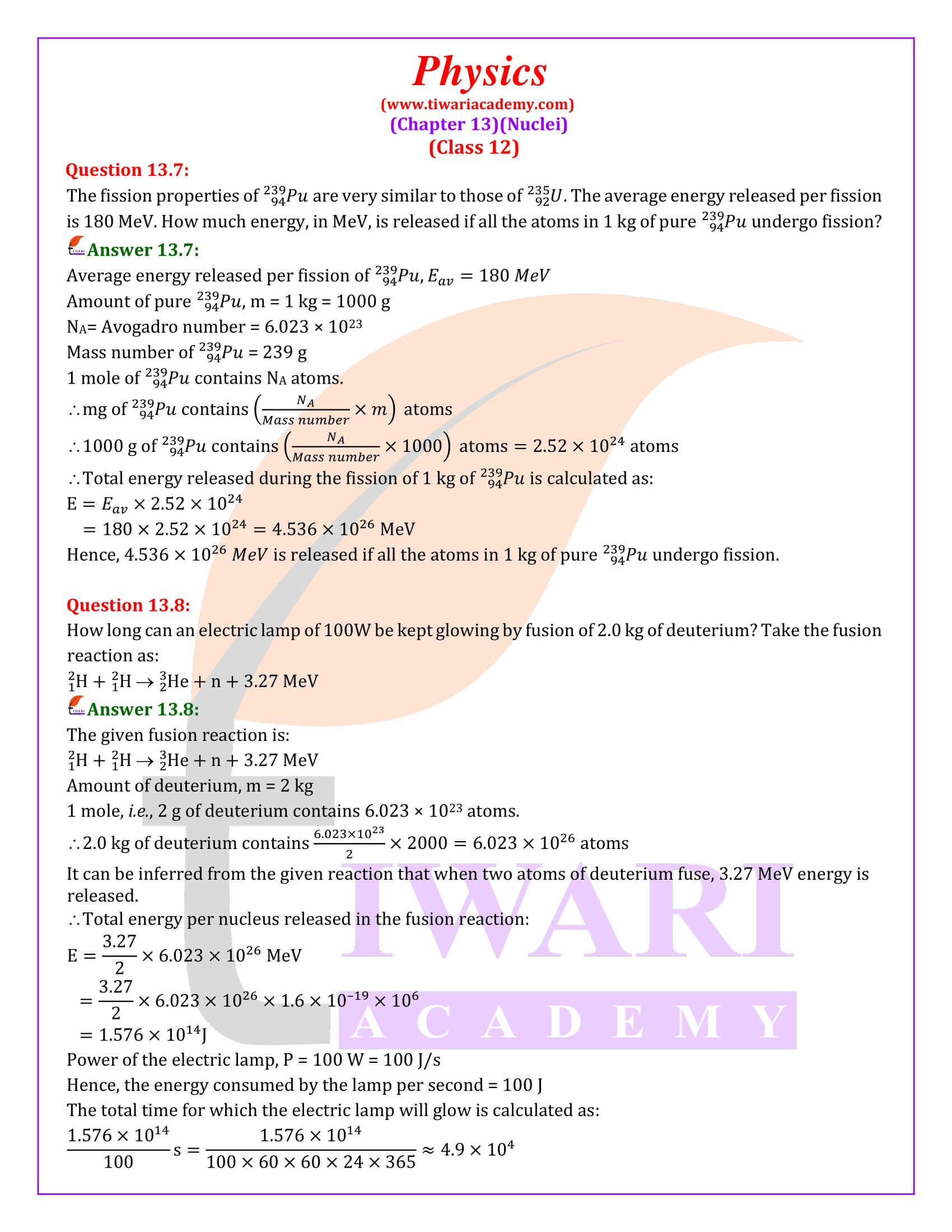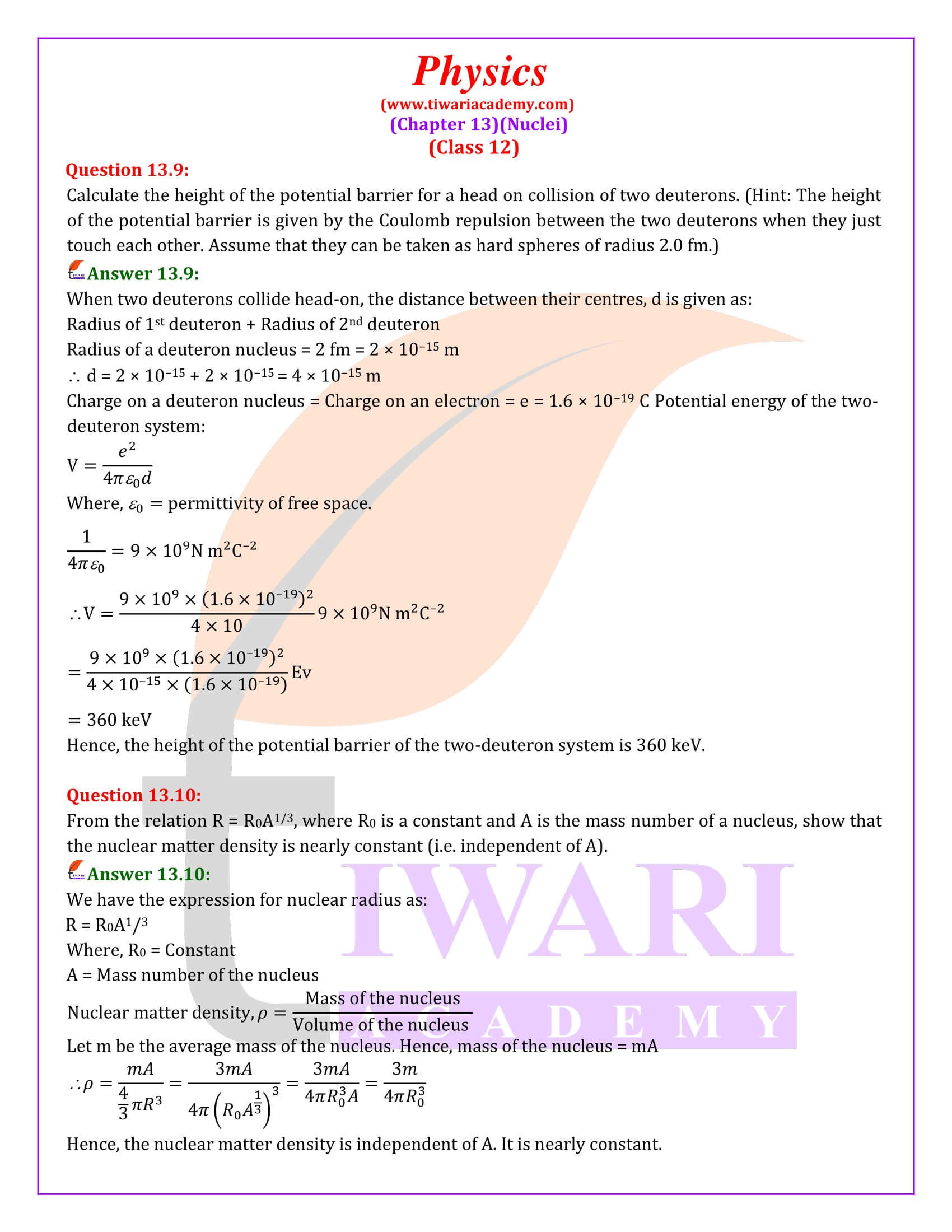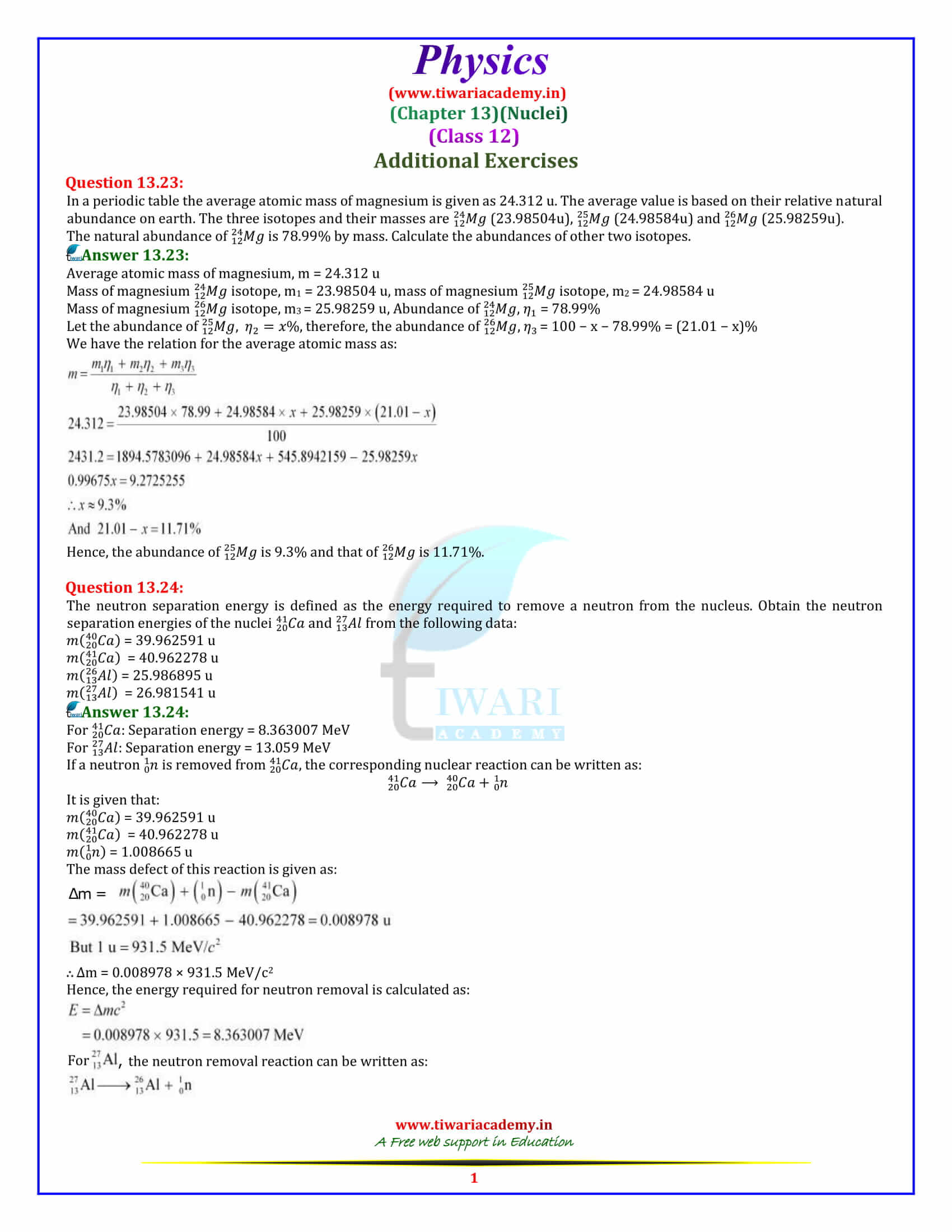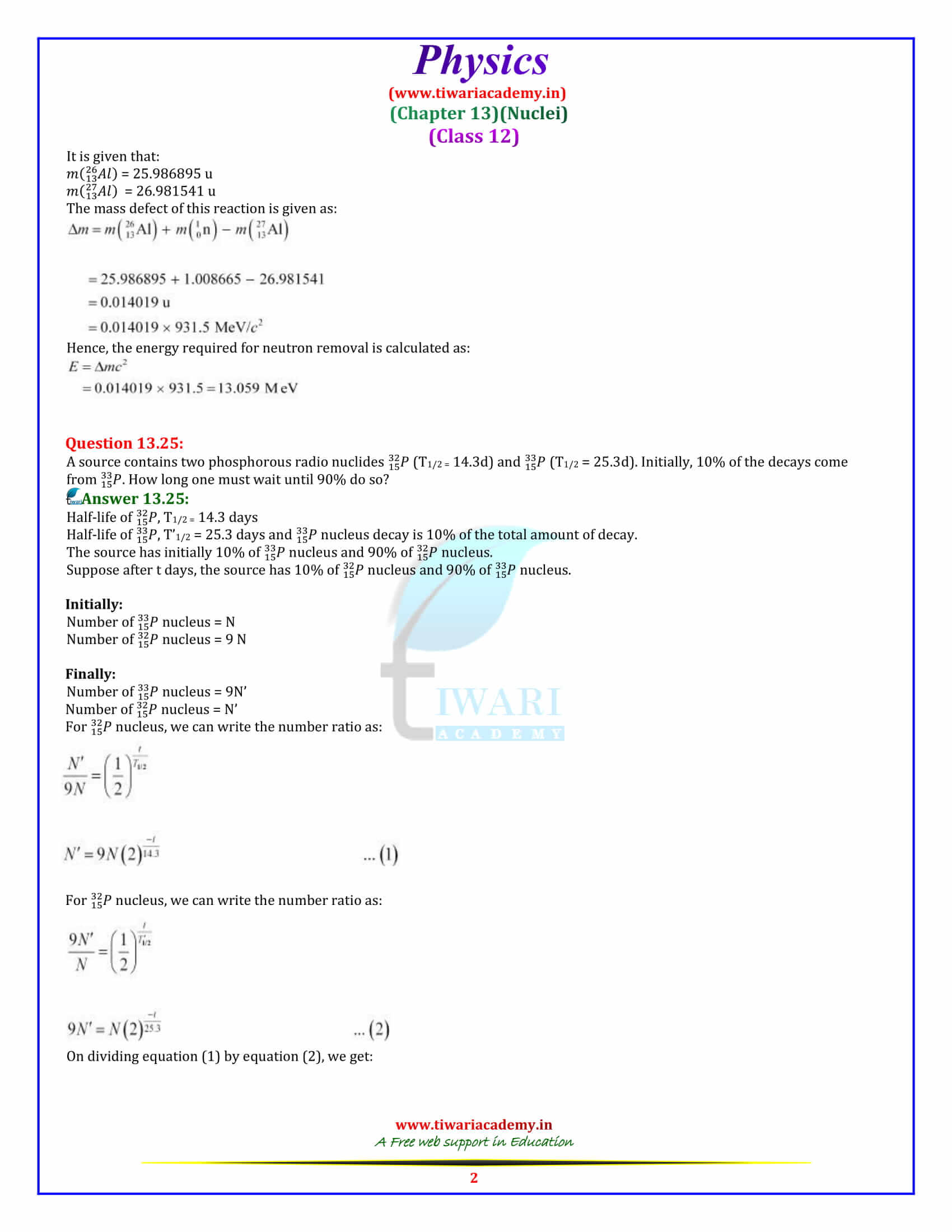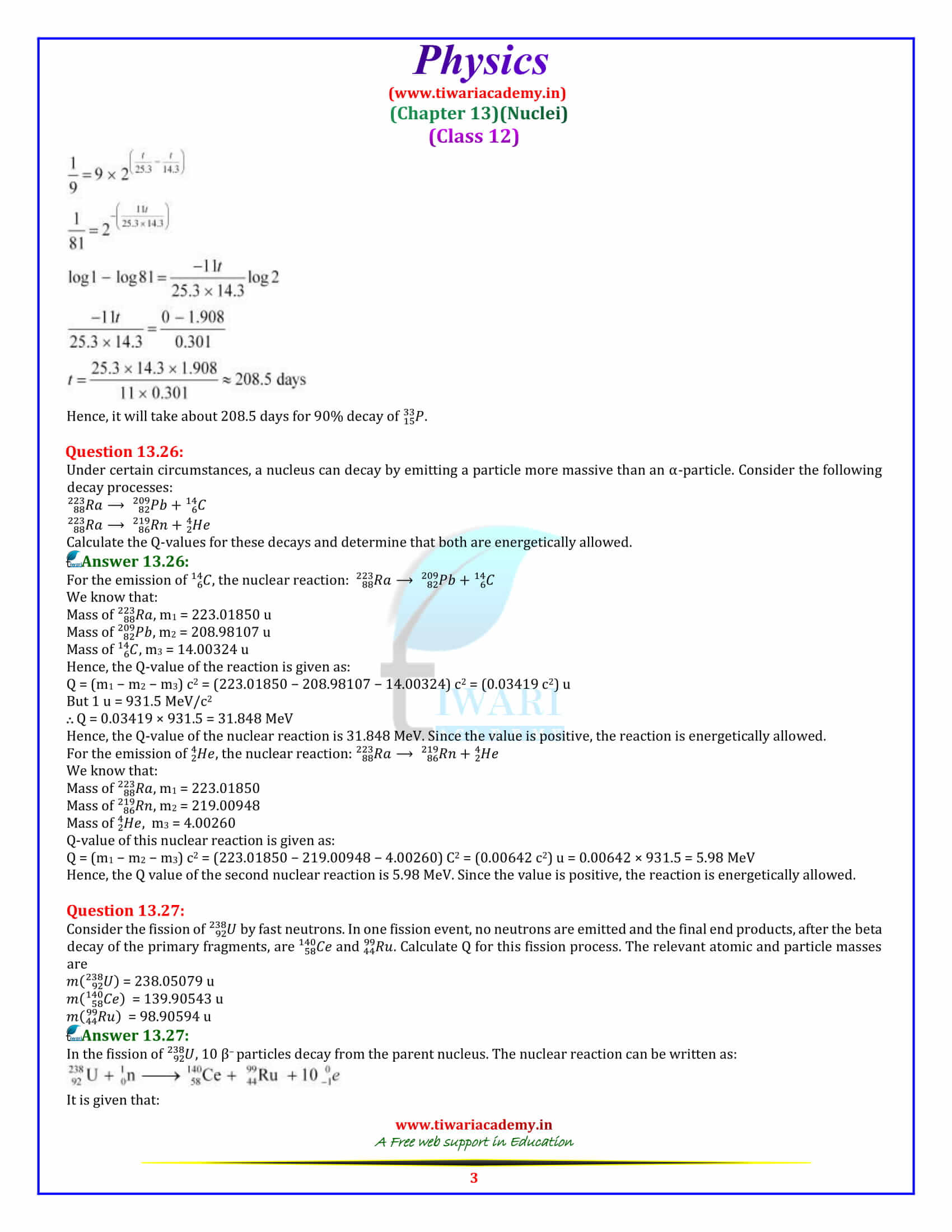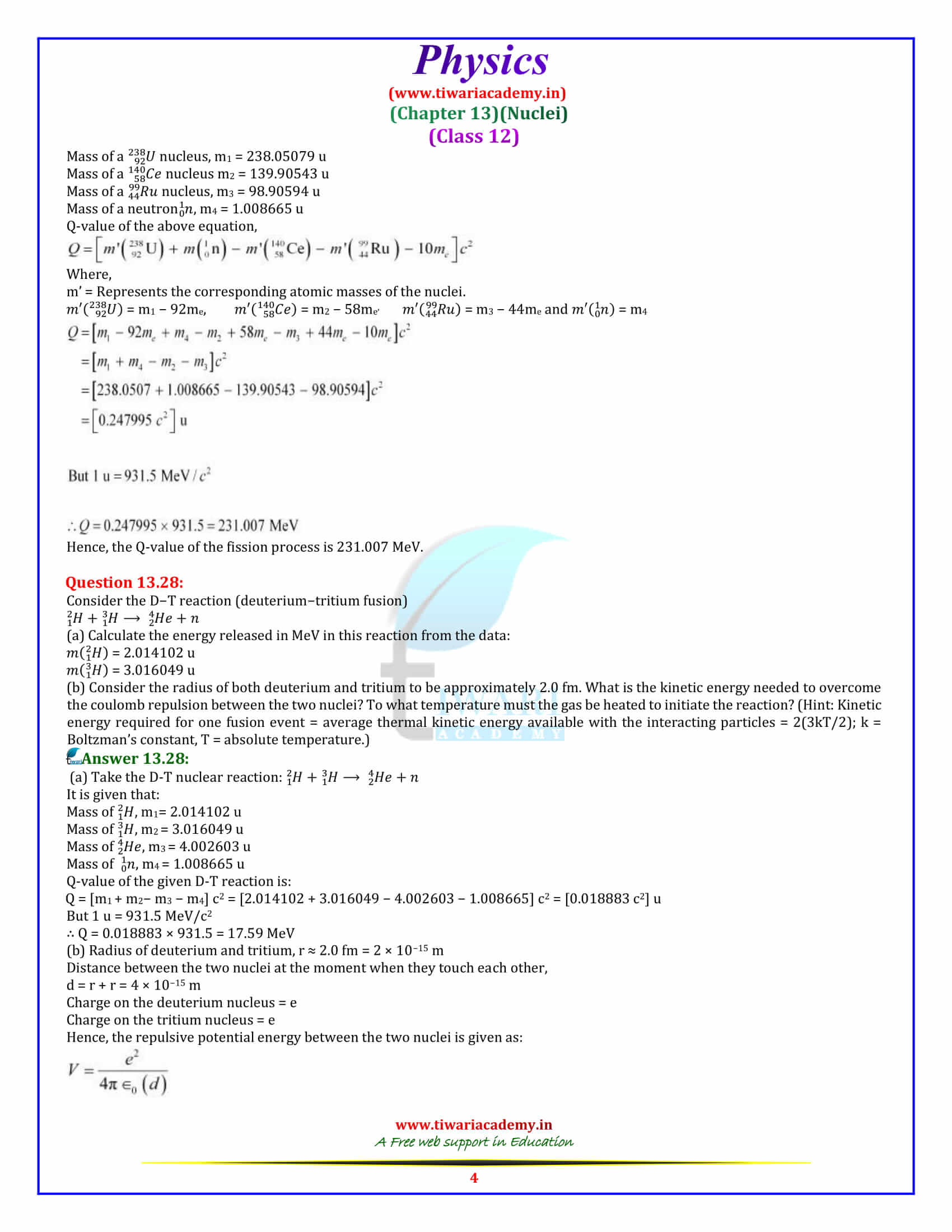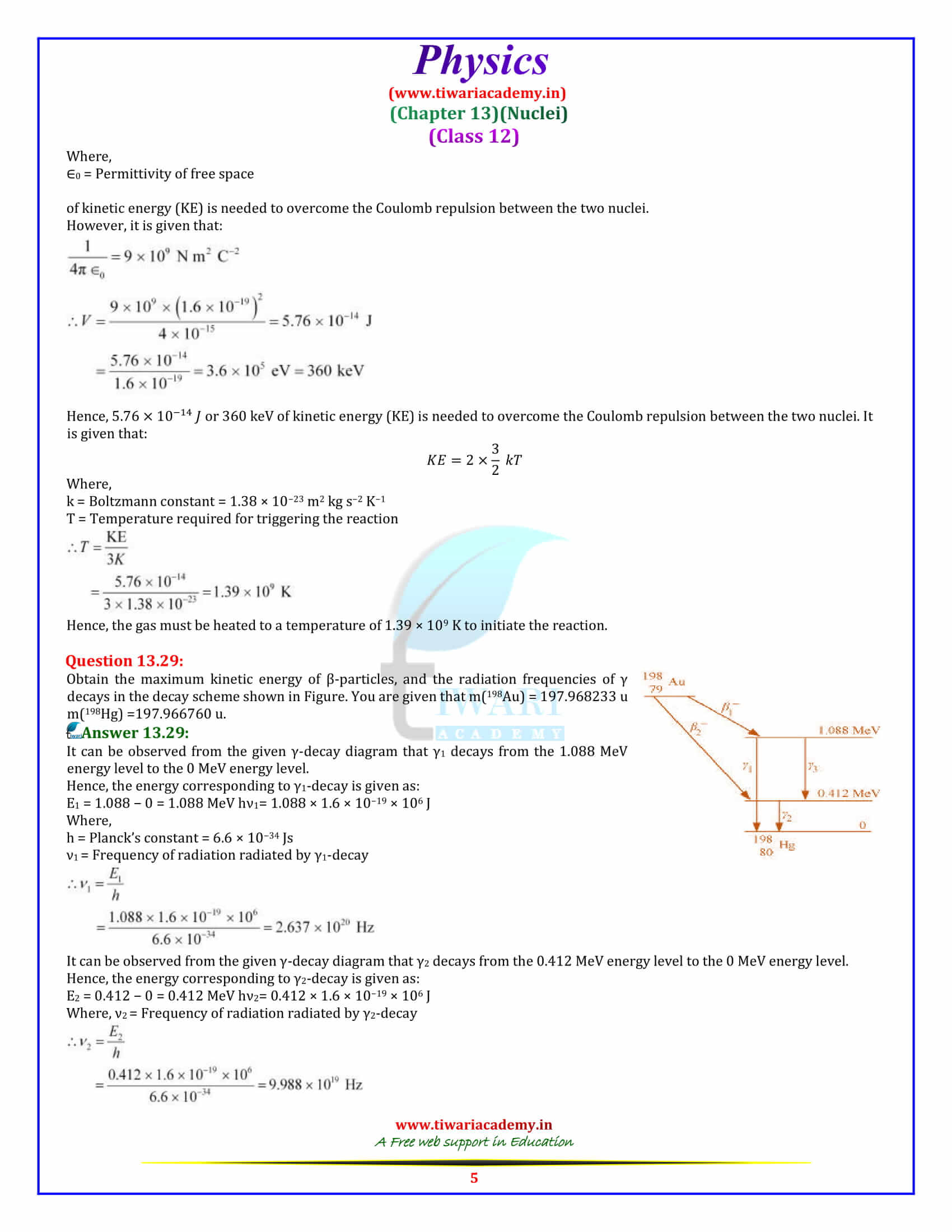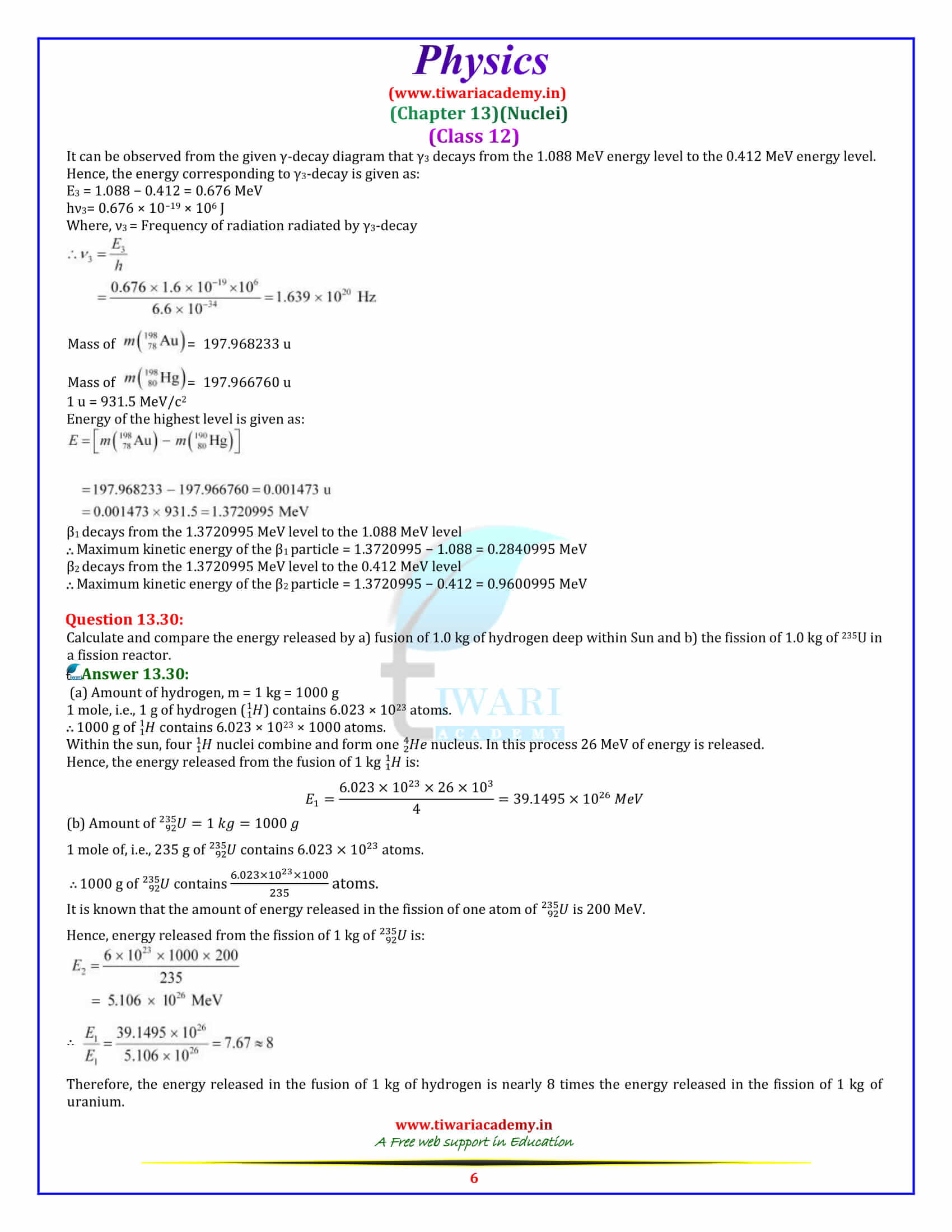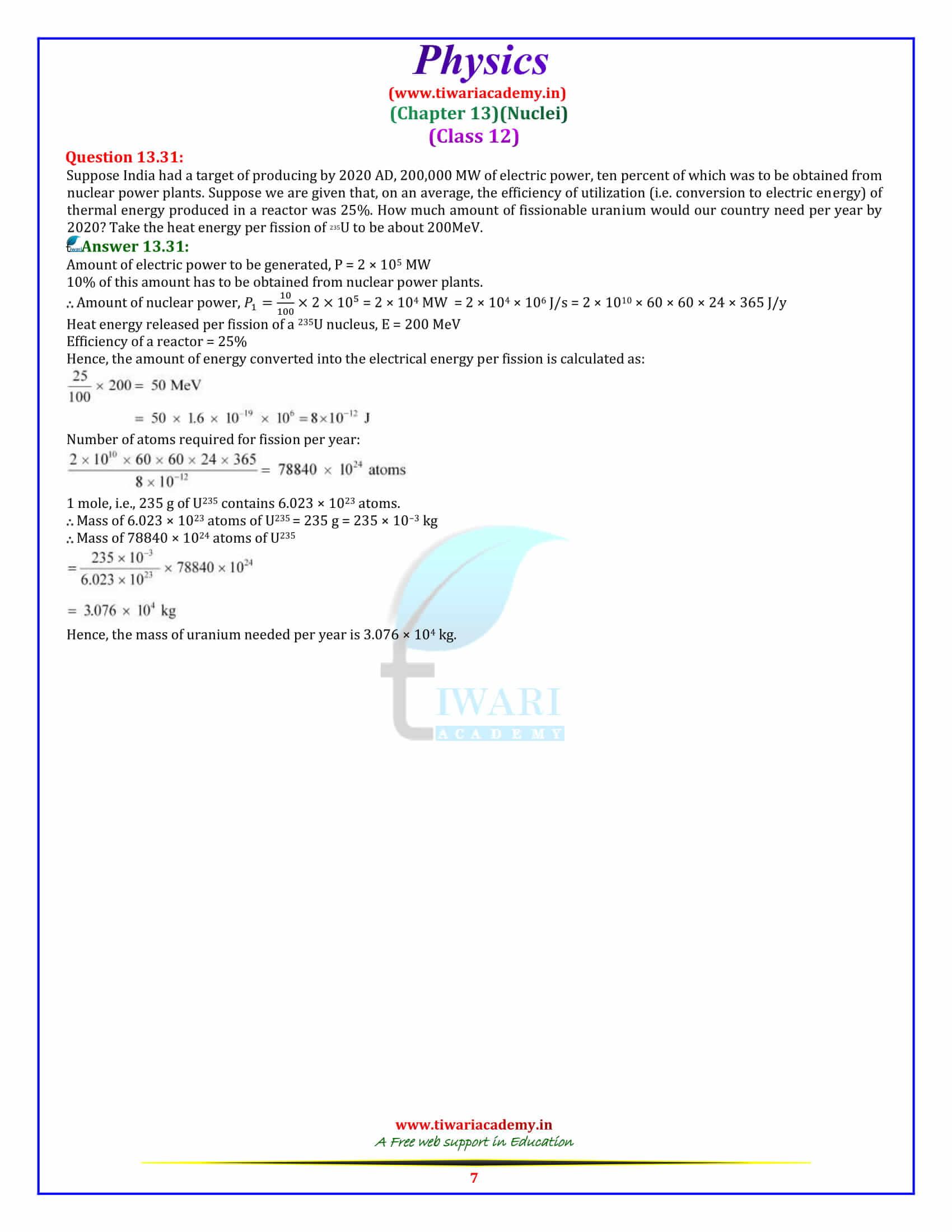NCERT Solutions for Class 12 Physics Chapter 13 Nuclei in Hindi and English Medium modified and updated for Session 2024-25. The Question answers and explanation of exercise are modified as per the new rationalised NCERT textbooks published for academic year 2024-25. In this session the additional exercise is not a part of syllabus.
NCERT Solutions for Class 12 Physics Chapter 13
Class 12 Physics Chapter 13 Nuclei Solutions
- Class 12 Physics Chapter 13 Exercises Solutions
- 12th Physics Chapter 13 Additional Exercises (Not in Syllabus)
- Class 12 Physics Chapter 13 Solutions in Hindi
- Class 12 Physics NCERT Book Chapter 13
- Class 12 Physics Revision Book Chapter 13
- Revision Book Answers
- Class 12 Physics Chapter 13 Revision Notes 1
- Class 12 Physics Chapter 13 Revision Notes 2
- Visit to 12th Physics Main Page
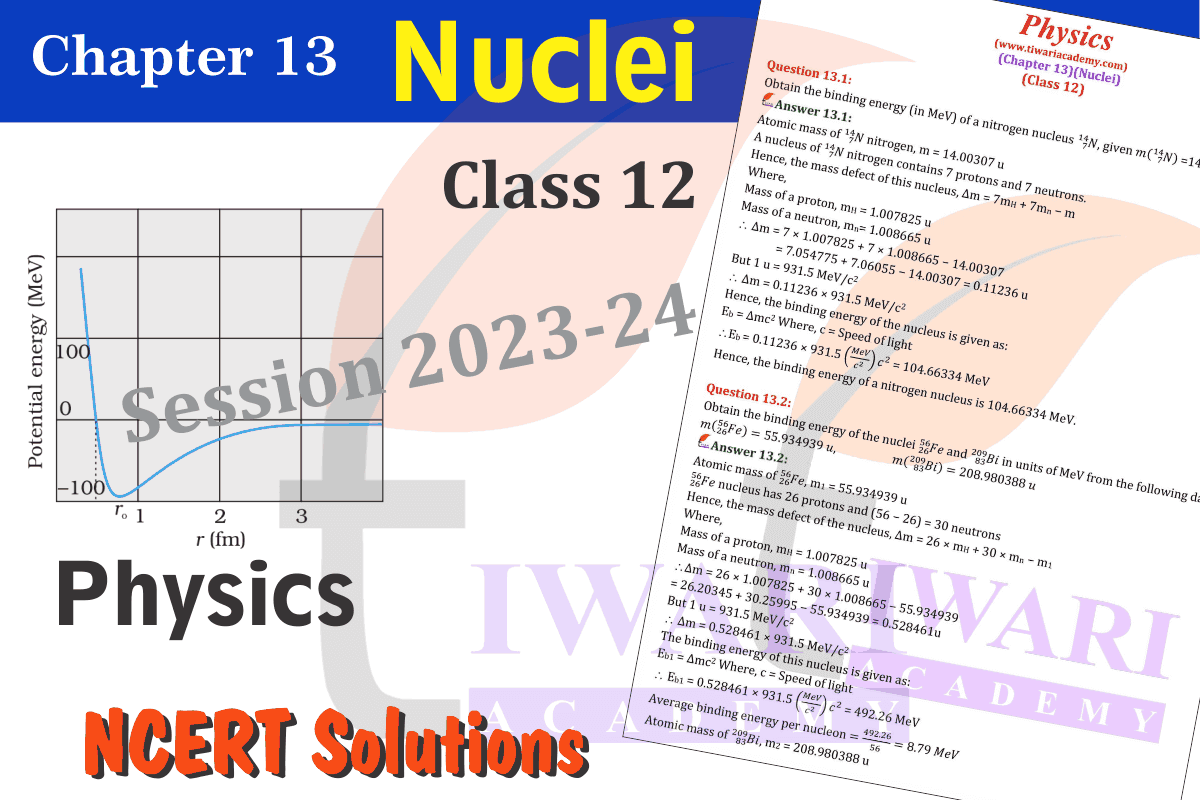
Get the Exercises Solutions and Additional Exercises Solutions for CBSE and UP Board Students to use it online or download in PDF file format to use it offline updated for new session 2024-25. Download CBSE Apps and NCERT Solutions in updated form based on new NCERT Books for 2024-25.
| Class: 12 | Physics |
| Chapter 13: | Nuclei |
| Content: | Exercises and Extra Questions |
| Content Type: | Text, Images, Videos and PDF |
| Academic Session: | 2024-25 |
| Medium: | Hindi and English |
Class 12 Physics Chapter 13 Solutions in English
NCERT Solutions for Class 12 Physics Chapter 13 in PDF form to free download. Download NCERT Books 2024-25 and offline apps based on new CBSE Syllabus 2024-25. If you have doubts in NIOS board or CBSE Board, please join the discussion forum.
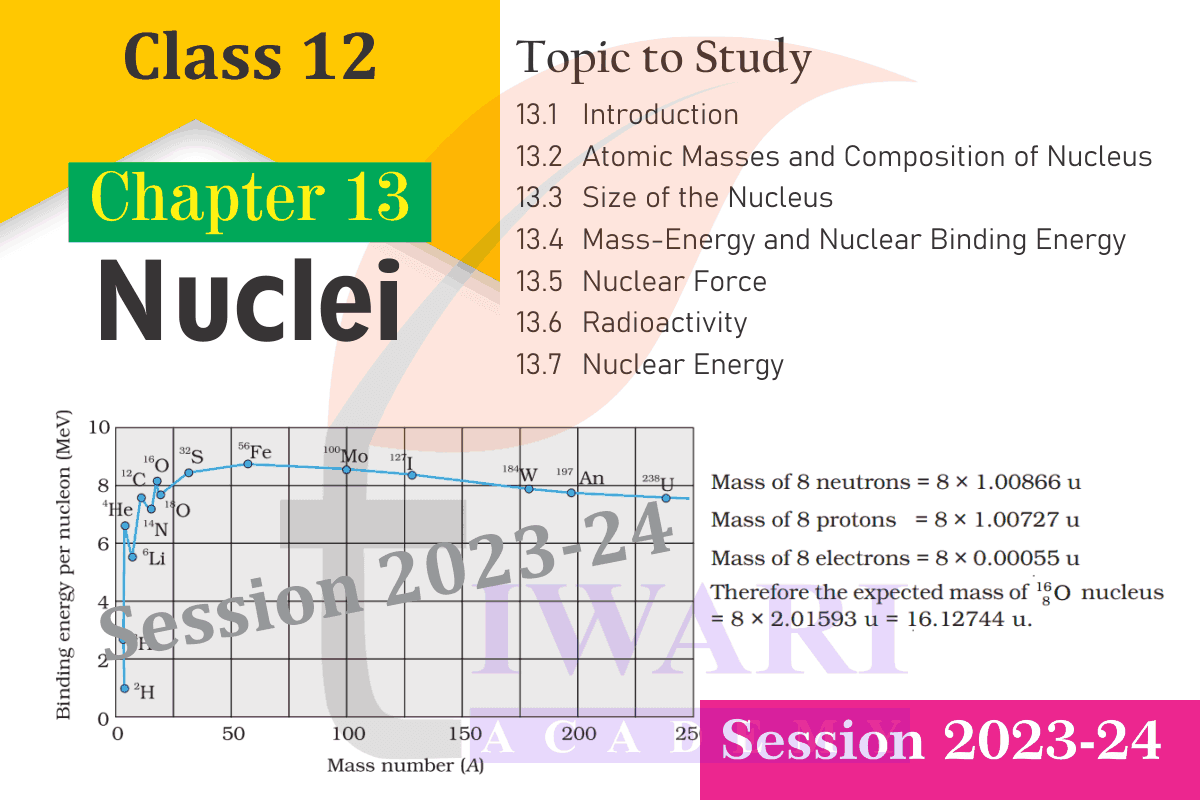
Important Questions for practice
1. Ultraviolet light of wavelength 350 nm and intensity 1W/m2 is directed at a potassium surface having work function 2.2eV. (i) Find the maximum kinetic energy of the photoelectron. (ii) If 0.5 percent of the incident photons produce photoelectric effect, how many photoelectrons per second are emitted from the
potassium surface that has an area 1cm2.
2. What is meant by nuclear fission and nuclear chain reaction? Outline the conditions necessary for nuclear chain reaction.
3. Define binding energy of a nucleus. Draw a curve between mass number and average binding energy per nucleon. On the basis of this curve, explain fusion and fission reactions.
4. What is beta decay? Write an equation to represent β– and β+ decay. Explain the energy distribution curve is β decay.
5. Draw energy level diagram for hydrogen atom and show the various line spectra originating due to transition between energy levels.
6. With the help of one example, explain how the neutron to proton ratio changes during alpha decay of a nucleus. Distinguish between nuclear fusion and fission. Give an example of each.
Questions from Board Papers
1. At a given instant, there are 25% undecayed radioactive nuclei in a sample. After 10 seconds, the number of undecayed nuclei reduces to 12.5%. Calculate the mean life of nuclei.
2. Determine the speed of the electron in n = 3 orbit of hydrogen atom.
3. A nucleus of mass M initially at rest splits into two fragments of masses M/3 and 2M/3. Find the ratio of de Broglie wavelength of the fragments.
4. A proton is accelerated through a potential difference V. Find the percentage increase or decrease in its de-Broglie wavelength if potential difference is increased by 21%.
5. The half life of a radioactive substance is 5 hours. In how much time will 15/16 of the material decay?
Important Questions on 12th Physics Chapter 13
Why do stable nuclei never have more protons than neutrons?
Protons are positively charged and repel one another electrically. This repulsion becomes so great in nuclei with more than 10 protons or so, that an excess of neutrons which produce only attractive forces, is required for stability.
In pair annihilation, an electron and a positron destroy each other to produce gamma radiation. How is the momentum conserved?
2γ photons are produced which move in opposite directions to conserve momentum.
Which one of the following cannot emit radiation and why? Excited nucleus, excited electron.
Excited electron because energy of electronic energy levels is in the range of eV, only not in MeV. as γ -radiation has energy in MeV.
